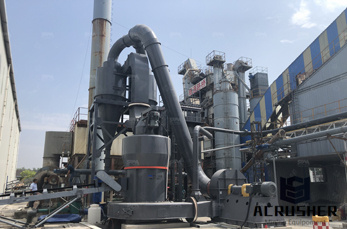
If needed, an additional coarser sieve can reduce the load on sieves below. For coarse aggregates, ASTM C136 specifies that mass retained in kg shouldn''t exceed the product of × (sieve opening, mm × (effective sieving area, m2)). Allow enough time on a sieve

ASTM Standards. C136 Test Method for Sieve Analysis of Fine and Coarse Aggregates. C702 Practice for Reducing Samples of Aggregate to Testing Size. D653 Terminology Relating to Soil, Rock, and Contained Fluids. D698 Test Methods for Laboratory Compaction Characteristics of Soil Using Standard Effort (12,400 ftlbf/ft3 (600 kNm/m3))

Gilson ASTM 3" diameter Round StainlessSteel Test Sieves meet the requirements of ASTM E Steel Frame with Stainless Steel Cloth assures a sieve with the longest possible service life. This is the best choice where contamination, sanitation or extreme wear is an issue.

ASTM Standards. C430 Test Method for Fineness of Hydraulic Cement by the 45m (No. 325) Sieve. E161 Specification for Electroformed Material and Test Sieves. E323 Specification for PerforatedPlate Sieves for Testing Purposes. E1638 Terminology Relating to Sieves, Sieving Methods, and Screening Media. E2016 Specification for Industrial Woven

ASTM Test Sieves come in several diameters: 3in (76mm), 6in (152mm), 8in (203mm), 10in (254mm), 12in (305mm) and 18in (457mm) and full or halfheight frames with different sieve sizes for a wide range of particle sizes. 12in Sieves also have an option for an Intermediate Height Frame.

Sieve mesh sizes are based on dimensions of the mesh size opening, or on the number of openings per linear inch. The two major standards governing test sieves and appropriate sizes are ASTM E11 and ISO 565/33101, both of which specify parameters for aperture dimensions, mesh size, and statistical variations. Opening sizes and mesh diameters for test sieves are often duplicated between these

특 징 판형(perforated sieve)은 SUS 304의 재질을 사용하고, 망형(wirewoven sieve)은 SUS 316을 사용해 제작합니다. 크기는 Ø200xH50(or 25)mm와 Ø203(8")mmxH50(or 25mm)이 기본입니다. ..

· ISO/ASTM Standard Sieve Series Specifications Phone sales The "Standard" designations listed below correspond to the values for test sieve apertures recommended by the International Standards Organization (ISO) Geneva, Switzerland.

Along with the ASTM E1117 Sieve Designation, this calculator will give you the Nominal Sieve Opening (Metric and Inches), ± Y Variation for Average Opening, + X Maximum Variation for Opening, Resulting Maximum Individual Opening, Typical Wire Diameter, and

International Sieve Chart / Micropowder Grit Chart from READE. Applicable standards are ISO 565 (1987), ISO 3310 (1999), ASTM E 1170 (1995), DIN 4188 (1977), BS

As of June 2018, the active standard specification for Woven Wire Test Sieve Cloth and Test Sieves is embodied in ASTM E1120. The requirements for the design and construction of testing sieves utilizing a medium woven wire cloth mounted in a testing frame, for use in testing the classification of materials given a designated particle size, are covered in detail.

ASTM E11 and ISO 3310/BS 410 are the two most commonly applied standards that specify the technical requirements and corresponding test methods for test sieves. The technical requirements in the standards include sieve cloth used in the test sieves, the construction of test sieves, standard and nonstandard test sieve frame sizes, and test procedures used to inspect sieve cloth and test sieves.

Yatherm manufactures ASTM standard sieves calibrated from NABL laboratory Delhi India. We supply all kinds of steel frame sieves, GI frame sieves, Brass frame sieves in customized micron. These Test Sieves are designed for Motorized shaker, Electromagnetic sieve shaker, Gyratory sieve shaker, Rotap Sieve shaker Vibration sifter.

ASTM Standards Regarding Test Sieves . Across the broader ASTM International jurisdiction, you can find sieves as a resource in standards for fine and coarse aggregates (ASTM C13614), metal powders (B21416), and plastic materials (D192118).

ASTM Standards. C117 Test Method for Materials Finer than 75m (No. 200) Sieve in Mineral Aggregates by Washing. C125 Terminology Relating to Concrete and Concrete Aggregates. C637 Specification for Aggregates for RadiationShielding Concrete. C670 Practice for Preparing Precision and Bias Statements for Test Methods for Construction Materials

Our list of current 8" Diameter ASTM Sieves products are listed below. If you cannot find what you are looking for, please contact us and we will try our best to help you. 8in Dia ASTM Sieve

ASTM Standards. D2652 Terminology Relating to Activated Carbon. D2854 Test Method for Apparent Density of Activated Carbon. E11 Specification for Woven Wire Test Sieve Cloth and Test Sieves. E177 Practice for Use of the Terms Precision and Bias in ASTM Test Methods. E300 Practice for Sampling Industrial Chemicals

PreCertified Stainless Steel/Stainless Steel 8" ASTM Test Sieve. Choose Options. Choose Options. Sonic Sieves 3" ASTM Clear Acrylic. Choose Options. Choose Options. Sonic Sieves 3" Clear Acrylic/Electroformed Nickel 1, Choose

All standard sieve frames are die stamped for quality – your assurance of consistency, fit, and function from sieve to sieve. Sieve frames stamped using 22 ga. Sheet metal – in some cases 37% thicker than the sieve frames found on competitors test sieves. Stainless Steel Sieve Cloth conforming to ASTM E1120 or ISO 3310 specifications.

The American Standard Test Sieve Series (ASTM) contains different aperture sizes according to the norm. View the specifications table here.

ASTM Test Sieves are available in 3, 8, and 12in (76, 203, and 305mm) diameters. These highquality Test Sieves are available in half or full height frames, with the option of selecting intermediate height frames when ordering 12in sieves. Sieve height and sieve frame diameter correspond to the test sample volume and particle size.

ASTM Standards. D653 Terminology Relating to Soil, Rock, and Contained Fluids. D854 Test Methods for Specific Gravity of Soil Solids by Water Pycnometer. D1140 Test Methods for Determining the Amount of Material Finer than 75m (No. 200) Sieve in Soils by Washing
 WhatsApp)
WhatsApp)